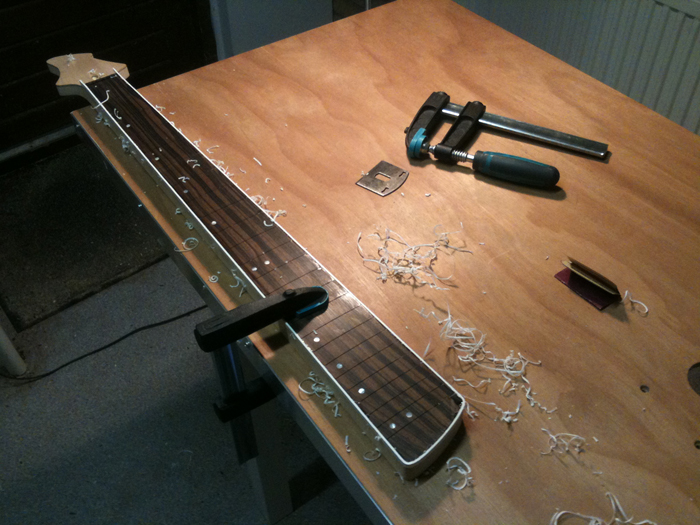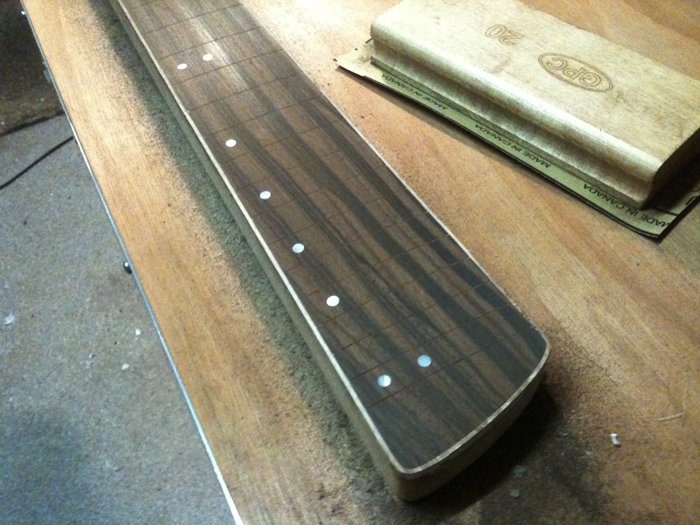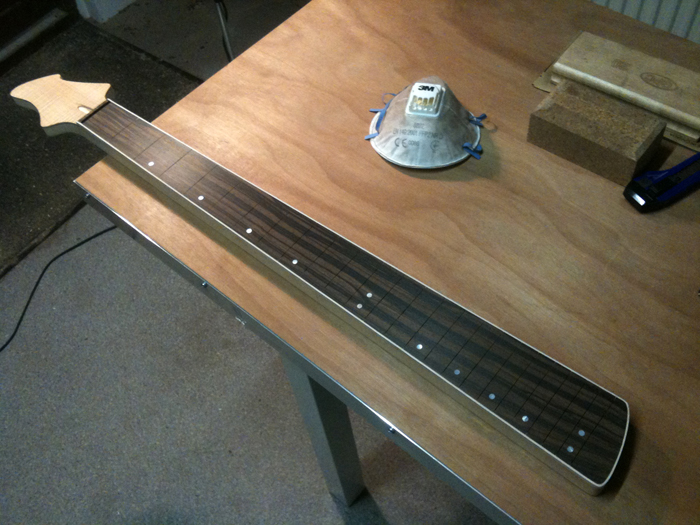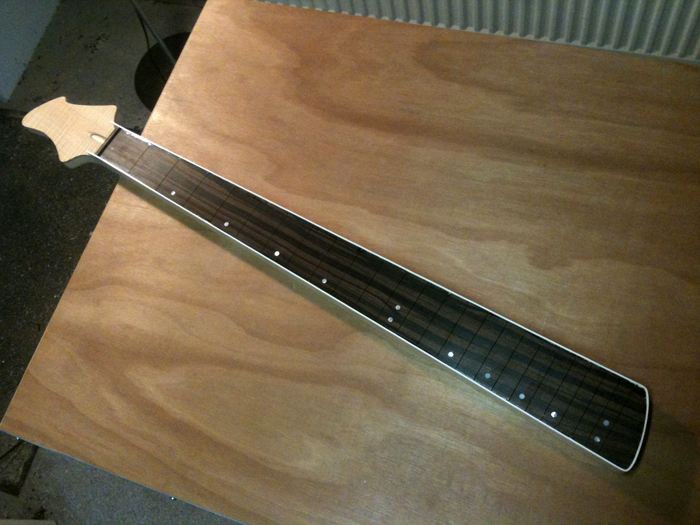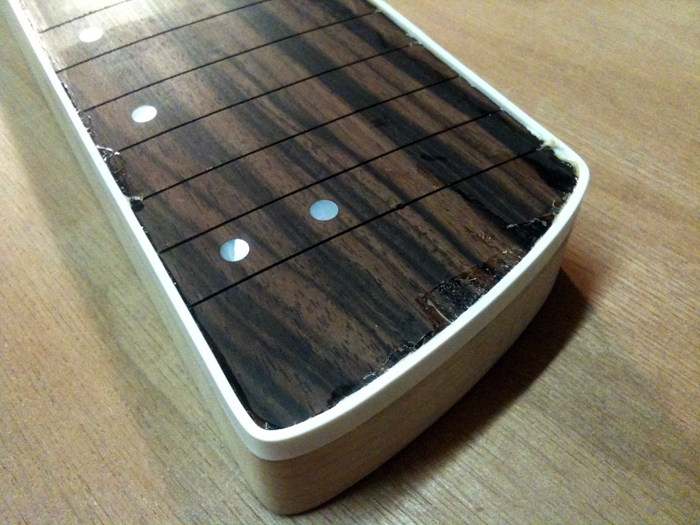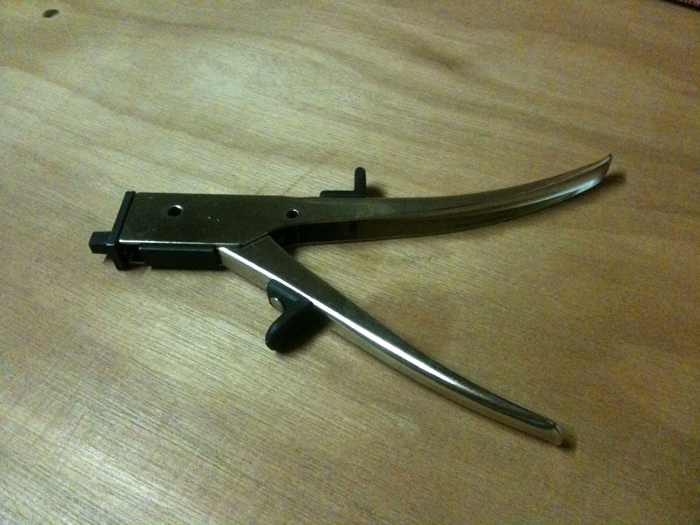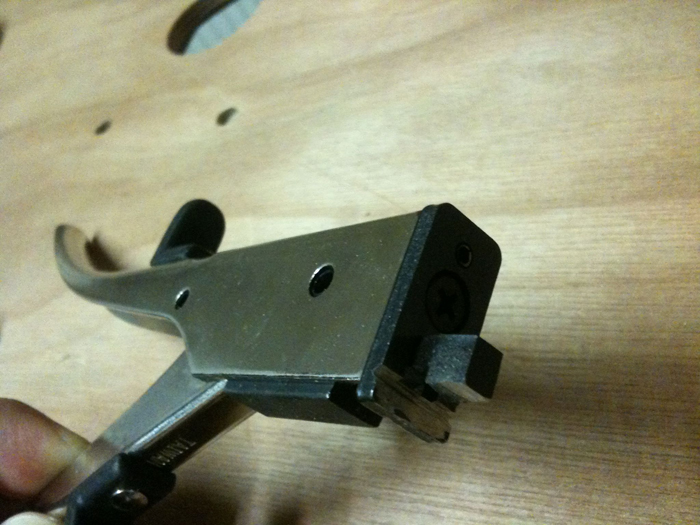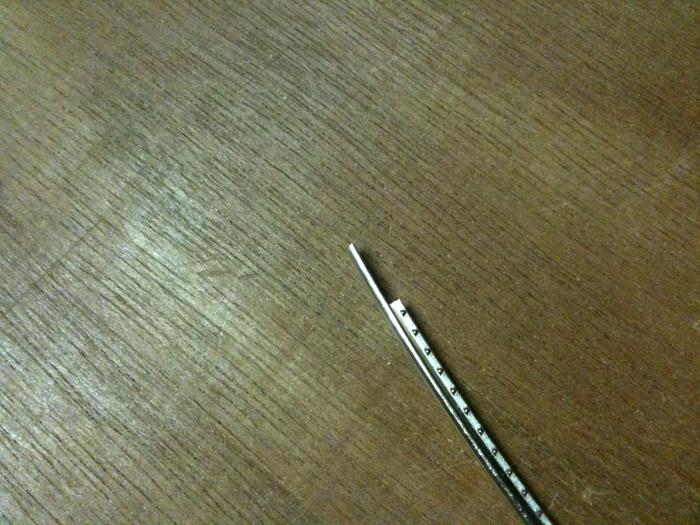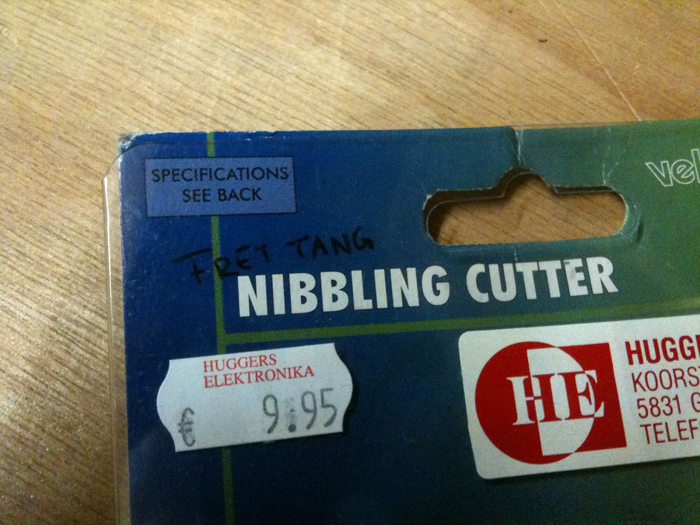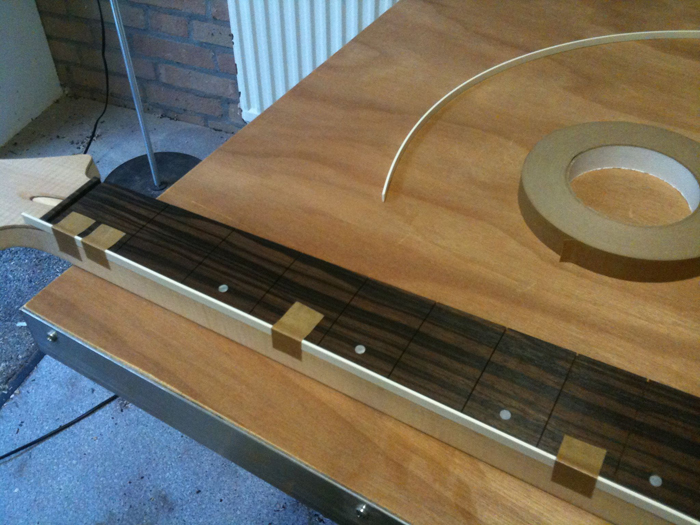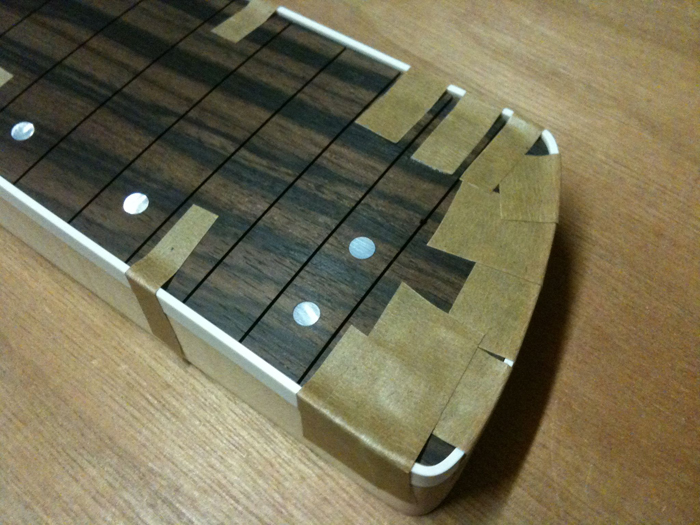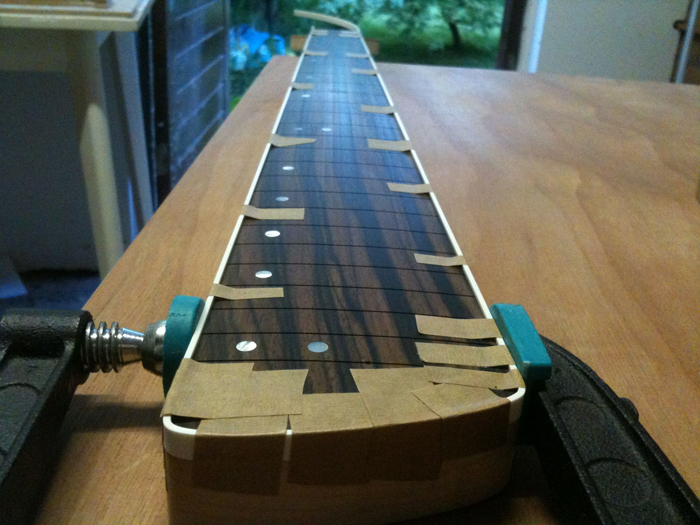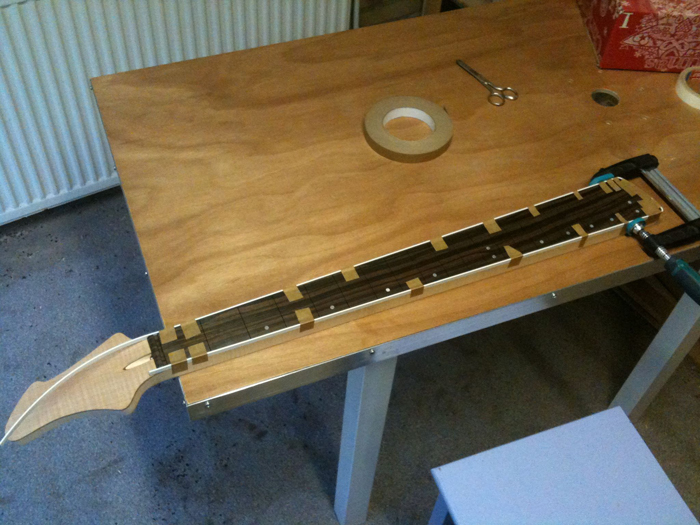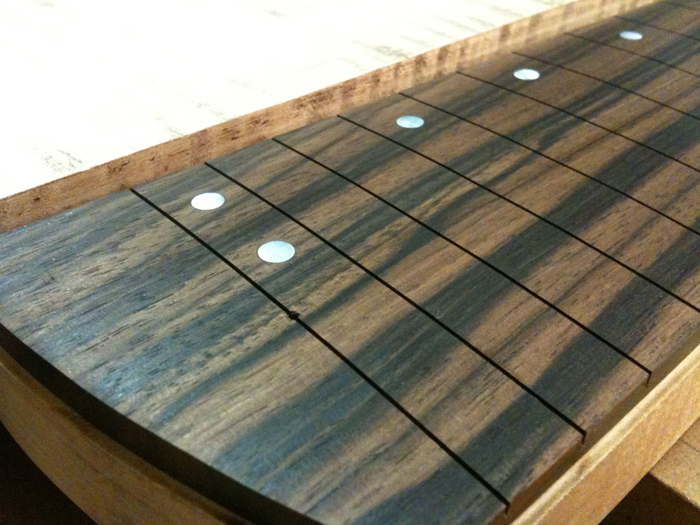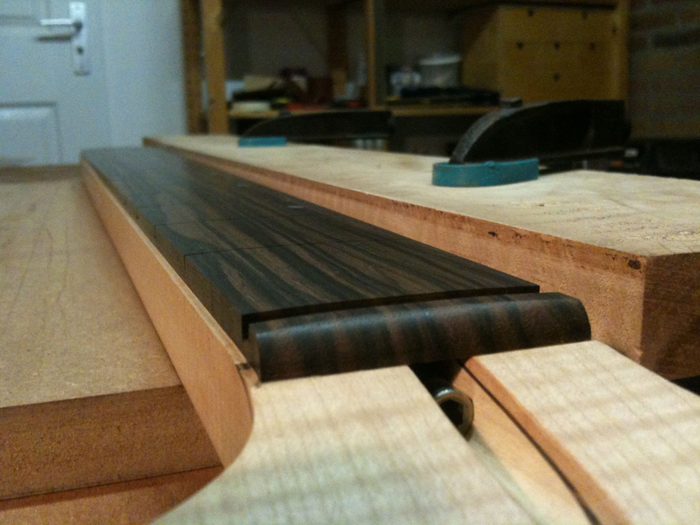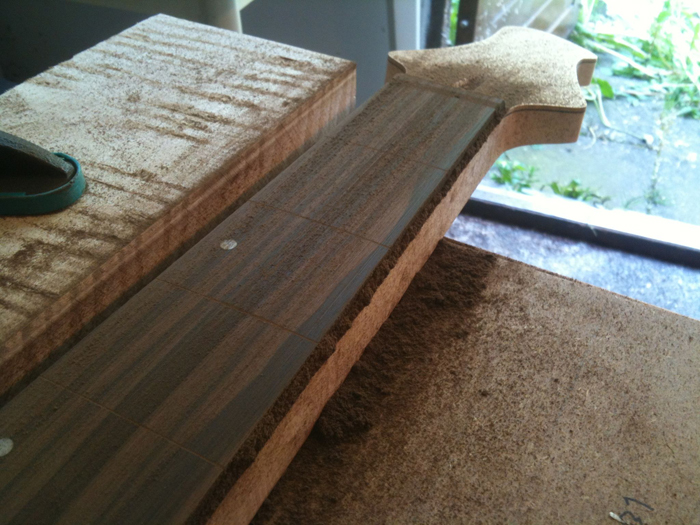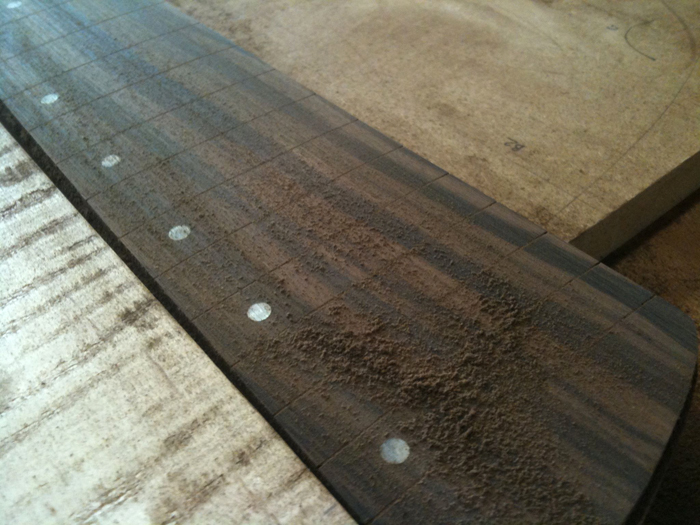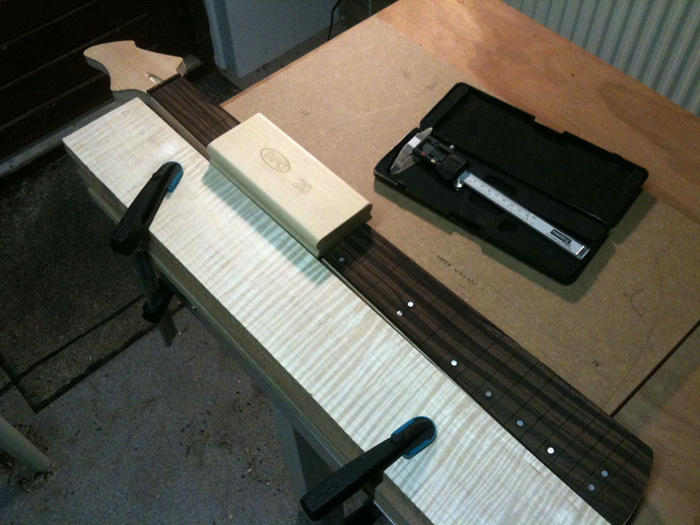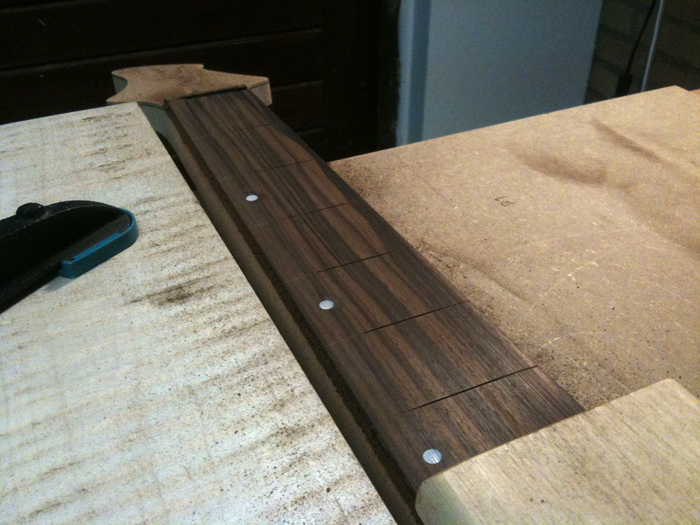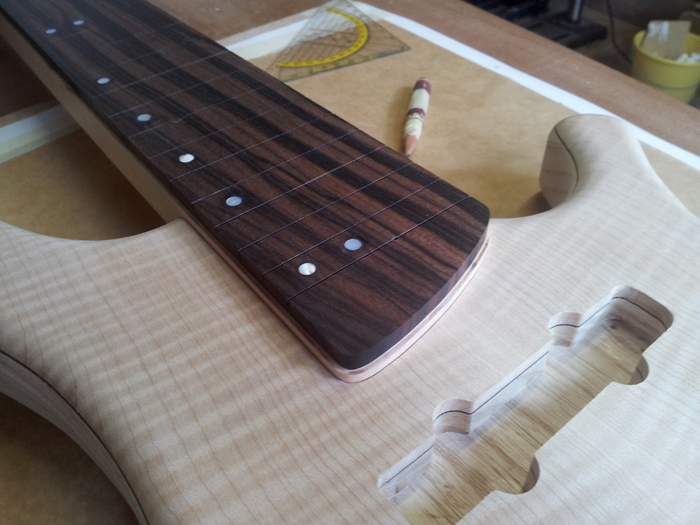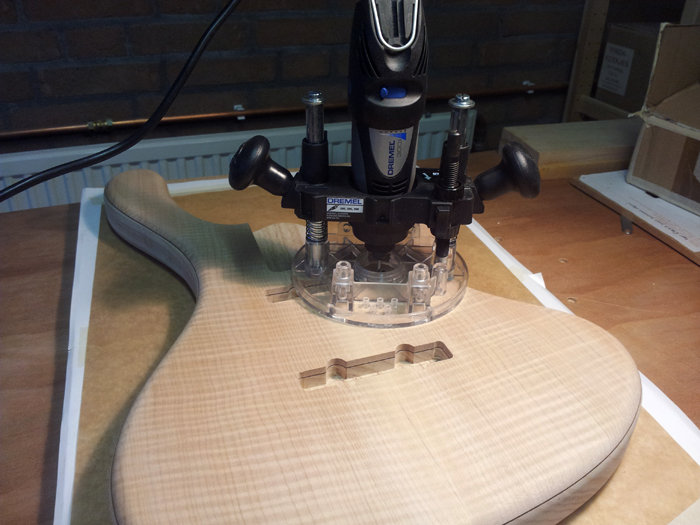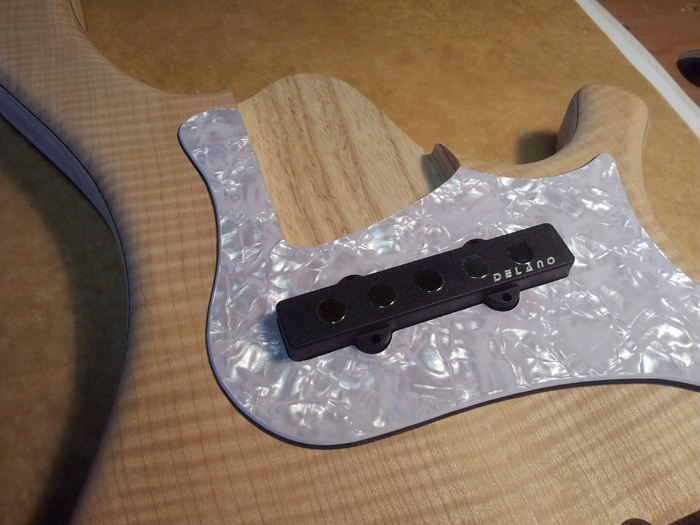Where was I?
Today, suddenly, I felt like building again… after a bit of a break. One of my mottos is: when you don’t feel like building, don’t. And since ‘perfect’ is my standard, I respect that rule!
Last time I worked on the bass I glued the binding to the fingerboard and neck with UHU Allplast. So today I started with scraping off the excess binding, as close to the fingerboard as I could:
I worked on some details with a sharp knife and switched to sanding with my 20" radiused sanding block using 120 grit sandpaper afterwards:
The excess glue was easier to remove than I thought it would be, so after a few passes I ended up with this:
Lastly, I sanded all edges and transitions with 180 grit, removing any scrape and scratch marks.
And a nice detail shot:
I’m satisfied with the result thus far, although I need to touch up some spots and work it up to some higher grits, but that’s an easy job to do just before I’ll start fretting the neck.
The next, daunting task, is to remove spilled glue from the fret slots. I’ve really made a mess of my clean fret slots, and I’m not sure how I will redress those slots, but I know for sure it’s going to be one of those tasks I dislike…
See you next time!

